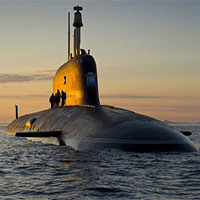Dynamite dynamite was one of the important inventions of the 19th century and it had both positive and negative effects on the world. But to this day, little is known about dynamite explosives.
We all know that dynamite is the creation of the famous chemist and inventor Alfred Nobel. It is often used mainly in construction to break large blocks or used as a military explosive.
But many people mistakenly believe that dynamite is similar to TNT. However, in fact they still have distinct points and can not confirm they are the same.

Dynamite dynamite is actually an explosive and has several interconnected chemical components.
You may have heard people say the term “TNT” is dynamite. but in fact TNT and dynamite are both explosives, but their nature is different.
Specifically if you picture that TNT is the name of the chemical inside the dynamite and that dynamite is a fully assembled explosive then you are only half correct. Dynamite is actually an explosive and has several interconnected chemical components.
But TNT or “2,4,6, -trinitrotoluene” is not one of the chemical ingredients that make up explosives. Instead, dynamite explosives use another explosive chemical called nitroglycerin.
Nitroglycerin was first produced in 1847 by the Italian chemist Ascanio Sobrero. The reason this chemical was chosen to make explosives is because it has far more destructive power than gunpowder. But the problem is that nitroglycerin is not as stable as TNT . It has caused a lot of tragic explosions, for example, the one in San Francisco, USA, was equal to a building and killed 15 people at that time.
But the great invention of the famous scientist Alfred Nobel changed everything. He found a way to “stabilize” nitroglycerin and help it play its right role, which is a powerful explosive that helps people blast rocks or dig tunnels…

TNT is the opposite of nitroglycerin as it is very difficult to explode.
By combining stabilized nitroglycerin and an explosive previously invented by Nobel, he created what is known as the dynamite dynamite. This word means “strength” in Greek.
Meanwhile, TNT is the opposite of nitroglycerin as it is very difficult to explode. In fact, it took almost 30 years after TNT was discovered before a chemist noticed the properties of this explosive. So we need to clearly distinguish TNT does not mean explosive dynamite.
There is a pretty common misunderstanding, that TNT and dynamite are one or the same dynamite that contains TNT. Actually TNT or trinitrotoluene, it is a chemical compound commonly used as a reagent in chemistry but also a form of explosive commonly used in industrial and military fields.
Besides, the destructive power of TNT is often used as a standard to evaluate other bombs and explosives.
But of course nitroglycerin and TNT have some chemical structure in common. Both have a Nitrogen atom in their chemical structure. But that’s not a coincidence. Many other explosives also contain nitrogen. Usually one of the products of an explosive chemical reaction is nitrogen gas or N2.
Super stable nitrogen gas. It’s in the air, which we breathe every day. But certain molecules tend to give off more energy than usual.

Nitroglycerin and TNT have some chemical structures in common.
At roughly the same time that Nobel was working on the explosive dynamite, British scientists were also using a molecule called “amyl nitrite” to treat angina caused by the inability of blood and oxygen to reach the heart.
Noticing the similarities between amyl nitrite and nitroglycerin, English physician William Murrell became the first to recommend nitroglycerin in the treatment of angina in 1879. Before that, William had spent a great deal of time researching about nitroglycerin. pharmacological effects of nitroglycerin.
Scientists now know that the human body breaks down nitroglycerin into a molecule called nitric oxide (different from the laughing gas nitrous oxide). This substance has the effect of dilating blood vessels and increasing the amount of blood and oxygen supplied to the heart, thereby reducing angina.
The World Health Organization (WHO) considers nitroglycerin to be one of the essential drugs for basic health systems. Even Alfred Nobel received a prescription for nitroglycerin, but he refused to use it because he was concerned about its actual effects on the body.

Nitroglycerin is one of the essential drugs for the basic health system.
Nitroglycerin’s vasodilating properties make it an effective drug for angina relief and for a longer sexual experience.
Many companies have used nitroglycerin in the production of condoms with the aim of stimulating blood flow to the penis and helping to improve erection when wearing a condom.

